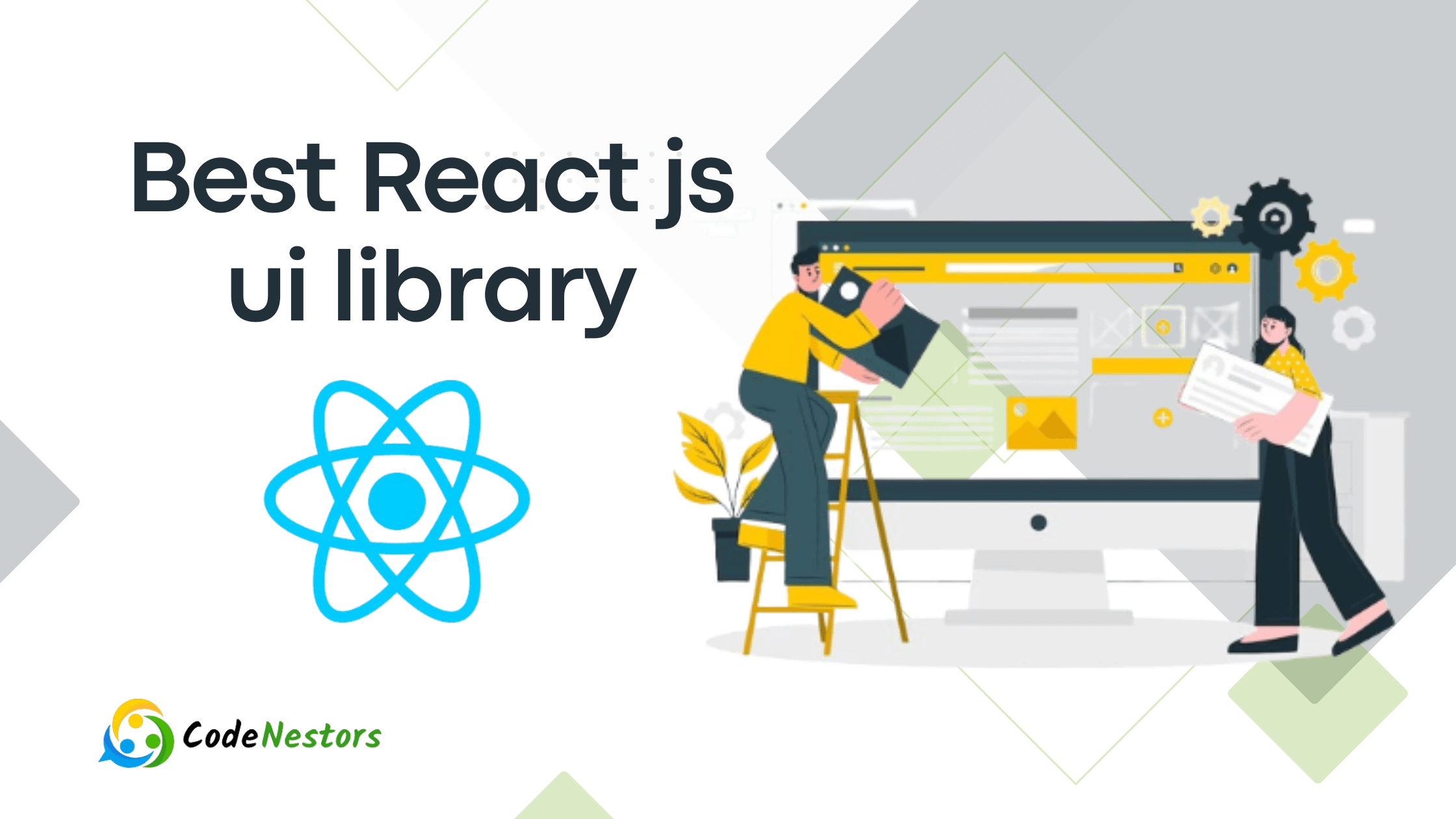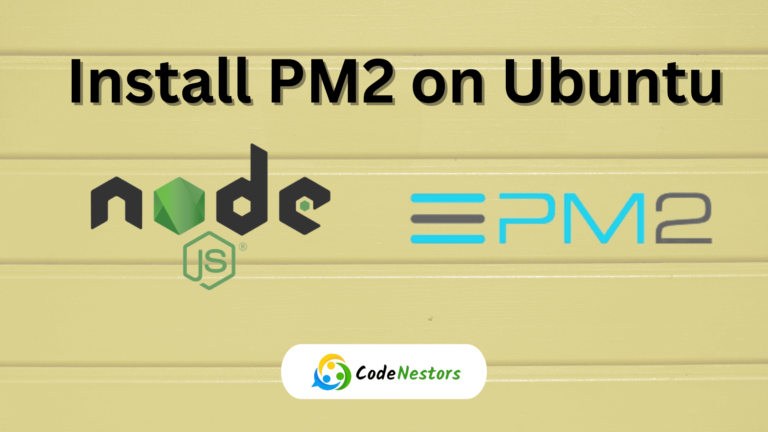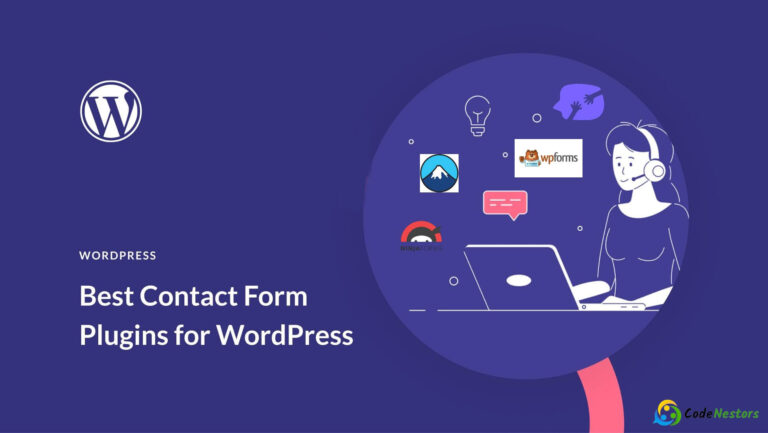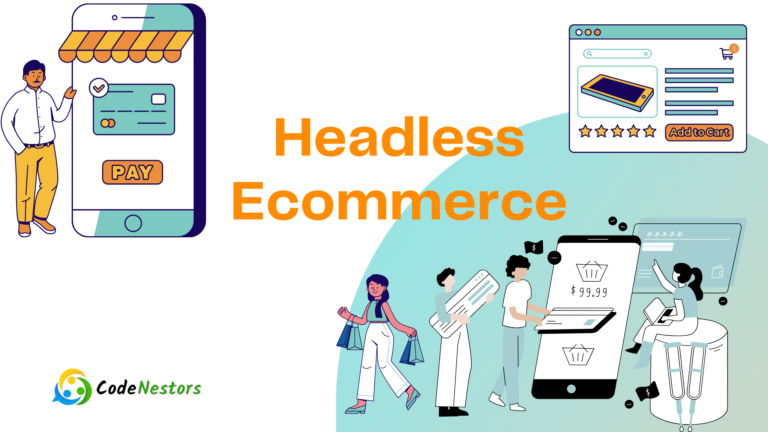best react ui library for uplift user interface

It’s very important to choose the right tools for web developing because the field is always changing and always updated. React is one of the framework which is important part of current web development and it is so popular also, can be used as website, web app , desktop app , admin dashboard, analytical dashboard etc. In React programming, picking the best react ui library is very important for making interfaces that look good, work well, and are easy for people to use. This blog post will take you on a trip to find some of the best react ui library out there right now.
Why Choose the best react ui library ?
before check out the list you need to know why choosing the best react ui library is important for your website interface. A good react ui library can cut costs by a large amount while also speeding up development, providing uniform design standards, giving thorough instructions, and building community support. Taking these factors into account, let us look at some of the best React UI options. we can say a best react ui library can save time for production of frontend also, it is very helpful and efficient for developer.
best react ui library
1. Material-UI
- Description: in best react ui library Material-UI offers a collection of React components implementing Google’s Material Design. It provides a comprehensive collection of customizable components for building responsive and sleek user interfaces.
- Key Features:
- Components that can be customized widely
- Easy customization through theme support
- Features designed to make accessibility easier
- Pros:
- Supported by an active community with well-documented evidence
- Provides seamless integration with React applications
- Updating and improving regularly
- Cons:
- The performance of large bundles may be affected
- For beginners, the process of theming can be complicated
- Example Usage: Using Material-UI components for navigation, cards, and data visualization in a dashboard application.
2. Ant Design
- Description: Alibaba’s Ant Design react ui library offers a wide range of enterprise-level components. Furthermore, it provides a wide range of features that can be used to build complex web applications.
- Key Features:
- A set of enterprise-level components, such as data displays, forms, navigation, etc.
- Multilingual applications with internationalization support
- Guidelines and best practices built into the design
- Pros:
- Resources and documentation are extensive
- Support from the community is strong
- A rich set of enterprise-ready components
- Cons:
- The extensive feature set makes it difficult for beginners to learn
- Compared to other libraries, there are fewer customization options
- Example Usage: Developing an e-commerce platform using Ant Design components for product listings, checkout forms, and user management.
3. Semantic UI React
- Description:Semantic UI React combines React components with Semantic UI ease of use. A multitude of responsive component types may be produced with elegant designs and semantic HTML standards.
- Key Features:
- Semantically-based markup for logical HTML elements
- Putting mobile first in responsive design
- Modular construction makes expansion and modification simple.
- Pros:
- Despite its simplicity, the syntax is straightforward and easy to understand.
- Community growth and development
- A variety of components that can be used in a variety of applications
- Cons:
- The components of this library are fewer than those of other libraries.
- Complex use cases can limit your ability to customize.
- Example Usage: Using Semantic UI React components for article cards, navigation menus, and comments, this project develops a blog platform.
4. React Bootstrap
- Description: The React Bootstrap component set replaces Bootstrap components with React components. Developers can now use Bootstrap’s CSS structure in React apps without any problems.
- Key Features:
- In Bootstrap, there are utility classes and a responsive grid scheme
- UI elements for buttons, forms, and modals that are pre-styled
- Connects easily to current Bootstrap projects
- Pros:
- Coders who already know Bootstrap can use this syntax
- There is a lot of information and an active group there
- Bootstrap’s useful classes let you make changes to your website easily.
- Cons:
- There isn’t as much flexibility with it as there is with other tools.
- The bundle could be larger if Bootstrap’s CSS is used.
- Example Usage: Using React Bootstrap components to create a portfolio website with a layout structure, navigation bars, and picture galleries.
5. Chakra UI
- Description: The chakra UI component library is a modern react ui library that emphasizes being easy for developers to use and accessible. It not only has a careful design system, also it has strong tools that make it easy to create available and beautiful applications.
- Key Features:
- The accessible components include screen reader assistance and keyboard navigation.
- Uniformity of design across all pages and elements.
- The program has functions for typical tasks such as typography, layout, and spacing.
- Pros:
- There can never be too much emphasis placed on diversity and availability.
- Support for theme customization with minimal setup
- APIs with developer-friendly syntax
- Cons:
- The group is smaller at this library than at other, better-known ones.
- There are more parts in other libraries than in this one.
- Example Usage: Using Chakra UI components, designing a social networking site with user profiles, timelines, and chat features.
6. PrimeReact
- Description: To give a brief overview of PrimeReact, it is a complete collection of numerous open-source react ui library that can be used in various situations, including but not limited to displaying data or information, submitting forms, and controlling user navigation – with more than 100 components to choose from and customize to your needs.
- Key Features:
- Comprehensive collection of react ui library including charts, tables, and calendars
- Integration with PrimeIcons and PrimeFlex for additional styling and layout options
- Easy setup and configuration with npm or yarn packages
- Pros:
- The comprehensive range of react ui library includes tables, charts, and calendars.
- Regular updates and bug fixes
- Well-documented with examples and demos
- Cons:
- Learning curve for beginners due to the vast number of components
- Limited theming and customization options compared to other libraries
- Example Usage: Building a project management tool with PrimeReact components for task lists, Gantt charts, and project timelines.
7. Evergreen
- Description: Evergreen is a powerful front-end react ui library toolkit that gives access to a set of functional and reusable building blocks used for constructing modern web applications. It lays emphasis on ease, efficiency, and availability.
- Key Features:
- The capability of creating a module to include in the design by all users is a typical example of such a reusable component, which can be enumerated as buttons, inputs, and tooltips.
- With minimalistic styling that is most important for usability and readability.
- Many developers today complain about huge bundle sizes, knowing that the creation of large web applications usually results in significant bundle sizes.
- Pros:
- lightweight and able to perform quickly.
- A development-friendly interface that has uniform design practices.
- One of the benefits is support for theming and customization.
- Cons:
- Comparing with others react ui library, it is a slightly smaller component library.
- There are hardly any available resources or tutorials within the community.
- Example Usage: One example of utilizing Evergreen components is to design a productivity application, such as a task manager with note-taking features and reminders.
8. Blueprint
- Description: A react ui library, Blueprint offers a collection of components and utilities that can be used to develop complex and data-filled user interfaces. It aims at assisting the creation of high-end applications for enterprises by providing a wide range of features.
- Key Features:
- High-quality components optimized for performance and usability
- Support for advanced features like data grids, date pickers, and tree views
- Modular architecture for easy integration with existing projects
- Pros:
- Rich feature set suitable for data-intensive applications
- Extensive documentation with usage examples and API references
- Active development and community support
- Cons:
- Steeper learning curve compared to simpler libraries
- Limited customization options for certain components
- Example Usage: Creating a financial analytics dashboard with Blueprint components for data visualization, charts, and interactive tables.
9. React Virtualized
- Description: React Virtualized is a set of react ui library tools for showcasing big lists and table data efficiently. It uses virtualization to cut memory use and boost performance. Key Points: Virtualized elements render big data sets with little effect on performance. You can use lists of fixed or variable sizes. It lets you set custom cell displayers and adjusts column widths.
- Key Features:
- Virtualized components for rendering large datasets with minimal performance impact
- Support for both fixed and variable-size lists
- Customizable cell renderers and column widths
- Pros:
- This can substantially enhance the efficacy of applications that handle large amounts of data.
- Simple API with clear documentation and usage examples
- Wide range of customization options
- Cons:
- Limited to specific use cases involving large lists or tables
- May require additional configuration for complex layouts
- Example Usage: Building an e-commerce platform with React Virtualized components for product listings, search results, and order histories.
10. React Query
- Description: React Query serves as a strong tool for fetching data in React apps. By offering functions for getting, storing, and aligning data from APIs, it simplifies handling intricate data needs.
- Key Features:
- Declarative API for fetching and caching data
- Automatic caching with stale-while-revalidate and invalidation strategies
- Integration with popular state management libraries like Redux and MobX
- Pros:
- Simplifies data fetching and caching logic
- Improves application performance by reducing unnecessary network requests
- Flexible and extensible architecture
- Cons:
- Learning curve for beginners unfamiliar with data fetching concepts
- Requires careful management of cache policies for optimal performance
- Example Usage: Developing a news aggregation platform with React Query for fetching and caching articles from multiple sources.
11. Grommet
- Description: Grommet is a react ui library that offers a variety of responsive and easily accessible components for building modern web apps. Consistency, flexibility, and user-friendliness are the three main principles.
- Key Features:
- Comprehensive collection of components including layouts, forms, and data visualization
- Responsive design with support for mobile, tablet, and desktop devices
- Theming support for customizing colors, fonts, and other visual styles
- Pros:
- Accessible components with built-in keyboard navigation and screen reader support
- Simple and intuitive API for rapid development
- Active community and ongoing development
- Cons:
- Limited number of components compared to more established libraries
- Theming can be complex for advanced customization
- Example Usage: Creating a digital marketplace with Grommet components for product listings, shopping carts, and checkout forms.
12. Rebass
- Description: Using Rebass you can create elastic and adaptive interfaces that are ultra-lightweight and customizable. In addition to simplicity and simplicity, it emphasizes the principle of composability and minimalism.
- Key Features:
- Minimalistic design with emphasis on composition and flexibility
- Primitive components for building custom UI elements with ease
- Theme-based styling system for consistent design across applications
- Pros:
- Lightweight and fast performance
- Flexible and composable API for building custom components
- Support for theming and customization
- Cons:
- Limited feature set compared to more comprehensive libraries
- Smaller community and fewer resources
- Example Usage: Developing a personal blog with Rebass components for article layouts, navigation menus, and comment sections.
13. React Suite
- Description: With React Suite, you can build complex online applications by utilizing a range of React components. Speed, consistency, accessibility, and a multitude of component libraries are some of the priorities of React Suite.
- Key Features:
- Comprehensive collection of components including layouts, forms, and navigation elements
- High-quality design with emphasis on accessibility and usability
- Flexible customization options with support for theming and CSS overrides
- Pros:
- Accessible and responsive components suitable for various use cases
- Extensive documentation and demo examples
- Active community and ongoing development
- Cons:
- Relatively smaller community compared to more established libraries
- Limited number of components compared to some other react ui library
- Example Usage: Developing a project management tool with React Suite components for task boards, calendars, and file managers.
14. Carbon Design System
- Description: Carbon Design System is a react ui library developed by IBM and offering a collection of components with styles for building enterprise-level applications. It emphasizes consistency, accessibility, and scalability.
- Key Features:
- Modular design system with reusable components and design tokens
- Accessible components with built-in keyboard navigation and ARIA support
- Scalable architecture for building and maintaining large-scale applications
- Pros:
- Well-documented with extensive design guidelines and usage examples
- Integrates seamlessly with other IBM products and services
- Regular updates and improvements from the IBM design team
- Cons:
- Steeper learning curve due to the complexity of enterprise-level design considerations
- Limited customization options compared to more flexible libraries
- Example Usage: Building a healthcare management platform with Carbon Design System components for patient records, appointment scheduling, and medical billing.
15. Onsen UI
- Description: Onsen UI is mainly mobile-first react ui library for building hybrid and progressive web applications(pwa). It has a comprehensive set of components and tools for creating native-like experiences across the platforms.
- Key Features:
- Mobile-friendly components optimized for mobile touch interactions and performance
- Support for both iOS and Android design guidelines
- Theming support for customizing styles and branding
- Pros:
- Simplifies cross-platform development with reusable components and templates
- Provides tools for integrating with frameworks like React and Angular
- Active community and ongoing development
- Cons:
- Limited to mobile and hybrid app development use cases
- Requires additional setup and configuration compared to web-specific libraries
- Example Usage: Developing a travel booking app with Onsen UI components for itinerary planning, hotel reservations, and flight bookings.
16. React Toolbox
- Description: React Toolbox is one of the react ui library that offers Google Material Design components for building modern web applications and dashboards. It provides a set of customizable and responsive components including a focus on design with consistency.
- Key Features:
- give Material Design components for buttons, cards, dialogs, and more
- Responsive layout system with support for mobile, tablet, and desktop devices
- Customization available for colors, typography, and other visual styles
- Pros:
- Familiar Material Design interface suitable for web-based applications
- Simple and intuitive API with clear documentation and examples
- Theme support for customizing styles to match brand identity
- Cons:
- Limited number of components compared to more comprehensive libraries
- May not provide as much flexibility as some other libraries
- Example Usage: Creating a productivity dashboard with React Toolbox components for task lists, calendars, and event reminders.
17. Belle
- Description: Belle is a set of components in react ui library for building customizable and responsive user interfaces for website and web app. It offers a collection of beautifully designed components with a focus on simplicity, elegance, and accessibility.
- Key Features:
- Clean and elegant design with emphasis on simplicity and usability
- Responsive layout system with support for mobile, tablet, and desktop devices
- Customization options for colors, fonts, and other visual styles
- Pros:
- Lightweight and fast performance
- Developer-friendly API with simple and intuitive syntax
- Well-documented with usage examples and demos
- Cons:
- Relatively smaller community compared to more established libraries
- Limited number of components compared to some other libraries
- Example Usage: Developing a photo sharing app with Belle components for image galleries, user profiles, and comment sections.
18. Fluent UI
- Description: Fluent UI is a cross-platform react ui library which is developed by Microsoft and offering a collection of components and styles for building web and desktop applications. It provides a consistent design language across platforms with a focus on accessibility and usability.
- Key Features:
- Unified design system with components for web, desktop, and mobile applications
- Accessible components with built-in keyboard navigation and screen reader support
- Theming support for customizing styles and branding
- Pros:
- Provides a consistent user experience across platforms
- Integrates seamlessly with other Microsoft products and services
- Regular updates and improvements from the Microsoft design team
- Cons:
- Steeper learning curve due to the complexity of enterprise-level design considerations
- Limited customization options compared to more flexible libraries
- Example Usage: Building a productivity suite with Fluent UI components for document editing, email management, and calendar scheduling.
19. React Desktop
- Description: React Desktop is one of the react ui library for building cross-platform desktop applications with React. It offers a set of native-like components and layouts for creating responsive and feature-rich desktop experiences.
- Key Features:
- Native-like components for building desktop applications with React
- Support for Windows, macOS, and Linux platforms
- Theming support for customizing styles and branding
- Pros:
- Simplifies cross-platform desktop development with React components
- Provides a consistent user experience across operating systems
- Active community and ongoing development
- Cons:
- Limited to desktop application development use cases
- Requires additional setup and configuration compared to web-specific libraries
- Example Usage: Developing a music player application with React Desktop components for audio playback, playlist management, and media controls.
best react ui library comparison
| Library | Features | Free/Paid/Open-Source | Drawbacks |
|---|---|---|---|
| Material-UI | – Customizable components – Theming support – Accessibility features | Open-Source | – Large bundle size – Theming complexity for beginners |
| Ant Design | – Enterprise-level components – Internationalization support – Design guidelines | Open-Source | – Learning curve for beginners – Limited customization compared to other react ui library |
| Semantic UI React | – Semantic HTML-based components – Responsive design – Modular architecture | Open-Source | – Limited number of components – Customization options may be restrictive |
| React Bootstrap | – Bootstrap’s grid system – Pre-styled components – Integration with Bootstrap | Open-Source | – Limited flexibility compared to other libraries – Dependency on Bootstrap’s CSS may increase bundle size |
| Chakra UI | – Accessibility emphasis – Theme-based styling – Developer experience | Open-Source | – Smaller community compared to more established react ui library – Limited number of components |
| PrimeReact | – Comprehensive collection of components – Integration with PrimeIcons and PrimeFlex | Open-Source | – Learning curve for beginners – Limited theming and customization options compared to other libraries |
| Evergreen | – Modular design – Minimalistic styling – Tree-shakable architecture | Open-Source | – Smaller component library compared to other react ui library – Limited community resources and tutorials |
| Blueprint | – High-quality components – Modular architecture – Advanced features | Open-Source | – Steeper learning curve compared to simpler react ui library – Limited customization options for certain components |
| React Virtualized | – Virtualized components – Support for large datasets – Customizable renderers | Open-Source | – Limited to specific use cases involving large lists or tables – May require additional configuration |
| React Query | – Declarative data fetching – Automatic caching – Integration with state management | Open-Source | – Learning curve for beginners unfamiliar with data fetching concepts – Requires careful cache management |
| Grommet | – Comprehensive components – Accessible design – Theming support | Open-Source | – Limited number of components compared to more established libraries – Theming complexity |
| Rebass | – Minimalistic design – Primitive components – Theme-based styling | Open-Source | – Limited feature set compared to more comprehensive libraries – Smaller community and fewer resources |
| React Suite | – Accessible components – Responsive design – Theming support | Open-Source | – Relatively smaller community compared to more established react ui library – Limited number of components |
| Carbon Design System | – Modular design system – Accessible components – Scalable architecture | Open-Source | – Steeper learning curve due to enterprise-level design considerations – Limited customization options |
| Onsen UI | – Mobile-friendly components – Support for iOS and Android – Theming support | Open-Source | – Limited to mobile and hybrid app development use cases – Requires additional setup and configuration |
| React Toolbox | – Material Design components – Responsive layout system – Customization options | Open-Source | – Limited number of components compared to more comprehensive react ui library – May not provide as much flexibility |
| Belle | – Clean and elegant design – Responsive layout – Customization options | Open-Source | – Relatively smaller community compared to more established react ui library – Limited number of components |
| Fluent UI | – Cross-platform design system – Accessible components – Theming support | Open-Source | – Steeper learning curve due to enterprise-level design considerations – Limited customization options |
| React Desktop | – Native-like components – Support for multiple platforms – Theming support | Open-Source | – Limited to desktop application development use cases – Requires additional setup and configuration |
FAQS
Which UI is best for Reactjs?
best ui for react js is depending on versus factors such as project requirement, project structure ,project content , design part , wireframe and used components.so we can not say any one because each react ui library has it’s own advantages and disadvantages.
Which one is best for UI framework?
there are many frameworks used for ui , it is depend on context of your project and your development team’s expertise. Frameworks like Bootstrap, Tailwind CSS, and Foundation offer different approaches to styling and layout.
what is react ui components and why it is Useful?
React UI components are reusable building blocks for creating user interfaces in React applications. They encapsulate functionality, styling, and behavior, making it easier to maintain and scale applications.




